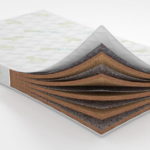A Japanese garden is a small area or a copy of real nature, which consists of 5 parts like stone, plants, water and other elements of architecture. Such components bring a person closer to nature. The basis of the Japanese-style garden is the philosophy and religion of the East.

Visually, an oriental-style garden should be divided into 2 zones. In the first zone, it is necessary to equip decorative objects like stones and plants. The second zone should remain empty. The main zone should be designed using the “visual remoteness” method. In the first zone, large plants are planted. And instead of plants, you can install large stones. Next, medium-sized plants are planted. Then you can plant the smallest flowers.

When designing a Japanese garden, you need to focus on the following:
- Elements should be asymmetrical.
- The lines should be smooth.
- The landscape should be dominated by purple, orange, red and green.
- Design techniques are practical.


In addition to flowers, a Japanese garden cannot exist without stones. For this, large stones and gravel can be installed over the area. When arranging, you should know that large stones are located separately, and small ones are grouped. The empty space between the stones must be covered with gravel.

In Eastern philosophy, water is a symbol of energy, prosperity and purification. When arranging a waterfall, shapes and sizes are of no small importance. Cascading waterfalls and a simple stream will look beautiful in the garden. On the shore of the reservoir, you can plant plants. Large stones must be placed at the bottom of the water.
The Japanese garden does not exist without plants. For such a structure, certain plants are selected that carry a special meaning.


For example:
- Pine symbolizes longevity, strength of character, also courage.
- Weeping willow stands for obedience and shyness.
- Plum tree characterizes mental wealth.
- Maple is a symbol of knowledge and wisdom.
- Bamboo characterizes strength of mind, perseverance and desire for a better life.
- Moss and lichen characterizes maternal, protection, love and fidelity.

In addition to plants, the bridge is of particular importance. In religion, the bridge is a symbol of the road of life. For this reason, bridges for the garden are made from expensive varieties of wood. For beauty, you can build a path from stones to the bridge. It is also recommended to plant flower beds around the bridge.

Equally important is the arrangement of decorative elements. For the Japanese garden you will need lanterns, arbors, hedges and bridges. Bells can be hung on trees.

-
 Why strongly recommend linen bedding
Why strongly recommend linen bedding
-
 All about the pros and cons of a modular kitchen
All about the pros and cons of a modular kitchen
-
 How to choose a quality pillow: types and their features
How to choose a quality pillow: types and their features
-
 Coconut mattresses to guard healthy sleep for adults and children
Coconut mattresses to guard healthy sleep for adults and children
-
 A carpet with a long or short pile, what to choose?
A carpet with a long or short pile, what to choose?
-
 How to properly equip a large bathroom
How to properly equip a large bathroom
-
 The benefits of rattan furniture
The benefits of rattan furniture
-
 Why are people delighted with viscose carpets
Why are people delighted with viscose carpets
-
 Are Acrylic Carpets So Good?
Are Acrylic Carpets So Good?
-
 What you need to know when choosing an aquarium?
What you need to know when choosing an aquarium?
-
 What bed to choose for a healthy sleep
What bed to choose for a healthy sleep
-
 Corner wardrobe modern design and filling
Corner wardrobe modern design and filling
New publications are published daily on our channel in Yandex. Zen
Go to Yandex. Zen


